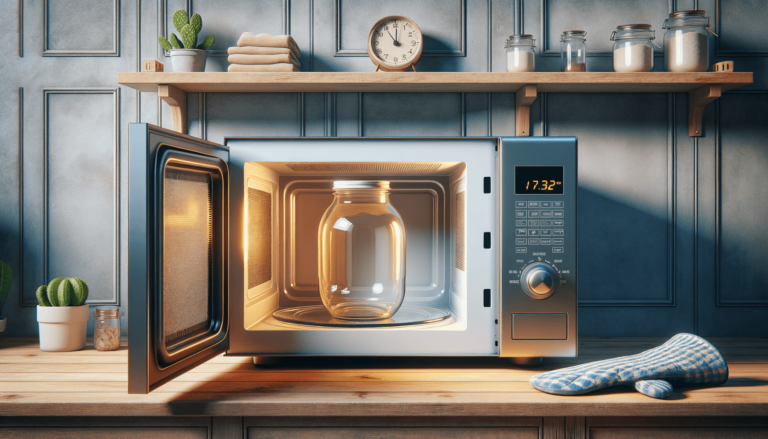

Yes, you can microwave glass jars, but it’s crucial to ensure they are microwave-safe. Not all glass is created equal, and some jars can crack, shatter, or explode if placed in the microwave under the wrong conditions. Checking the jar for a microwave-safe label and following some simple guidelines can make microwaving glass jars safe and convenient.
Quick Summary
At Setting King, we’re here to offer our trusted advice on how to navigate the convenience of your kitchen appliances safely. Let’s dive deeper into the specifics of microwaving glass jars to ensure you’re fully informed.
The first step in safely microwaving glass jars is to determine whether your jar is microwave-safe. This information can often be found on the bottom of the jar or its packaging. Look for a label or symbol indicating it is suitable for microwave use. If there’s no label, it’s best to err on the side of caution and not use it in the microwave.
Even when a glass jar is labeled as microwave-safe, there are additional steps you should take to ensure safety and prevent accidents:
Thermal shock occurs when a glass jar undergoes rapid temperature changes, which can cause it to crack or shatter. This is why it’s crucial to avoid putting a cold glass jar directly from the refrigerator into the microwave. Allow the jar to reach room temperature first or heat it slowly and at lower power levels initially.
If you’re unsure about microwaving a glass jar, or if it’s not labeled as microwave-safe, consider alternatives such as:
Remember, at Setting King, our priority is to provide you with reliable and safe advice for all your kitchen inquiries. Microwaving glass jars can be a convenient option when done correctly and safely. Always check for a microwave-safe label, take necessary precautions, and when in doubt, opt for alternative heating methods.